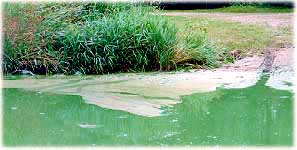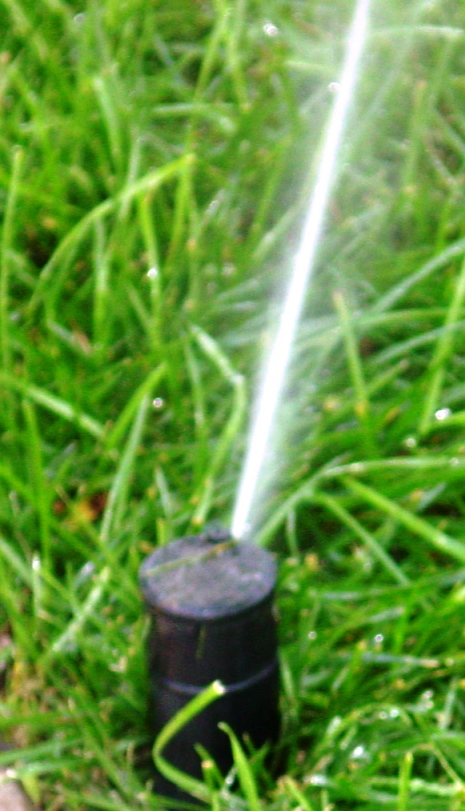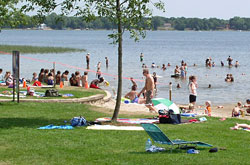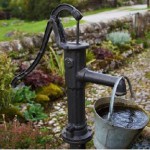Teams of local students from Andover and Columbia Heights High Schools recently participated in the Metro Envirothon at the U of MN Landscape Arboretum in Chaska. The Environthon tests junior high and high school students on their knowledge of Minnesota’s natural resources in an outdoor environment. The Oral Presentation calls upon students to demonstrate critical […]
Archive for the ‘Good to Know’ Category

July is Smart Irrigation Month
 June 26th, 2015
June 26th, 2015  knowtheflow
knowtheflow Water used to maintain golf courses, parks, commercial properties, and residential yards is becoming a critical issue nationwide – even in the land of 10,000 lakes. By and large, operators of in-ground irrigation systems tend to overwater their lawns, which can be costly, wasteful, and unsustainable for local water resources. By selecting and planting carefully, watering wisely, […]

Anoka Conservation District clean water projects
 June 15th, 2015
June 15th, 2015  knowtheflow
knowtheflow The Anoka Conservation District is involved in a number of projects using Clean Water Land and Legacy Funds to protect and manage Anoka County’s land and water resources. Protecting Minnesota’s waters is a joint effort between state and local agencies, who collaborate and partner on water resource management activities under the Clean Water Fund. Thirty-three […]

How’s the water? Overmedicated
 June 12th, 2015
June 12th, 2015  knowtheflow
knowtheflow In the last decade, national and statewide studies have revealed that many chemicals with known or suggested endocrine-disrupting potential to adversely affect developmental, reproductive, neurological, and immune systems in wildlife. These chemicals include pharmaceuticals, personal care products, chemicals associated with wastewater effluent, and a variety of industrial compounds. Apart from the disquieting realization that wastewater chemicals and […]

Well Sealing Cost-share Grants Available
 June 11th, 2015
June 11th, 2015  knowtheflow
knowtheflow It comes as a surprise to many Anoka County residents and businesses that they have an old unused well on their property. Many homes and businesses were (and are) constructed before municipal water was available. So, a well is constructed to serve the building. As city water reaches the property, the well is replaced by a connection […]
Waterspot on Anoka Sandplain Partnership
 June 11th, 2015
June 11th, 2015  knowtheflow
knowtheflow The Anoka Sandplain Partnership is a coalition of conservation stakeholders, led by Great River Greening, with a mission to bring together their collective expertise, resources and connections to advance terrestrial and freshwater resource conservation in this ecological region. The Anoka Sandplain serves as a critical filter of groundwater in Anoka County (and east-central Minnesota). It […]

Hot weather brings algal blooms to lakes and ponds
 June 8th, 2015
June 8th, 2015  knowtheflow
knowtheflow When the summer sun shines and temperatures climb, conditions are ripe for Minnesota lakes to produce harmful algal blooms (HAB). Most algae are harmless, but under the right conditions, certain types of algae can pose health risks. People and animals may become sick if they come into contact with or ingest affected water. In extreme […]

Watering restrictions + creating sustainable turf and water supply
 May 22nd, 2015
May 22nd, 2015  knowtheflow
knowtheflow During the summer months water use increases for lawn sprinkling. Homeowner water use in July can be six (6) times greater than January. Sudden increased water demand (especially during a dry summer) can exceed a public water system’s capacity causing the water tower to go dry. Odd-even watering bans keep residents from draining the water […]

Make a healthy splash: share the fun, not the germs
 May 18th, 2015
May 18th, 2015  knowtheflow
knowtheflow May 18–24, 2015, the week before Memorial Day, marks the eleventh annual Healthy and Safe Swimming Week. Swimming is one of the most popular sports activities in the United States. Pools, waterparks, hot tubs/spas, splash pads, and water playgrounds are great places to have fun, be active, or just relax. Have fun while you swim […]

Protecting drinking water “everyone has a role to play”
 May 6th, 2015
May 6th, 2015  knowtheflow
knowtheflow (May, 6, 2015) Commissioner Ehlinger of the Minnesota Department of Health (MDH) says that nitrate pollution is a growing problem around MN, but we can take action to protect our drinking water. “Everyone has a role to play.” Nitrate nitrogen (nitrate) comes from many sources, including fertilizers, manure, septic systems, and natural decomposition of organic […]



 Posted in
Posted in 